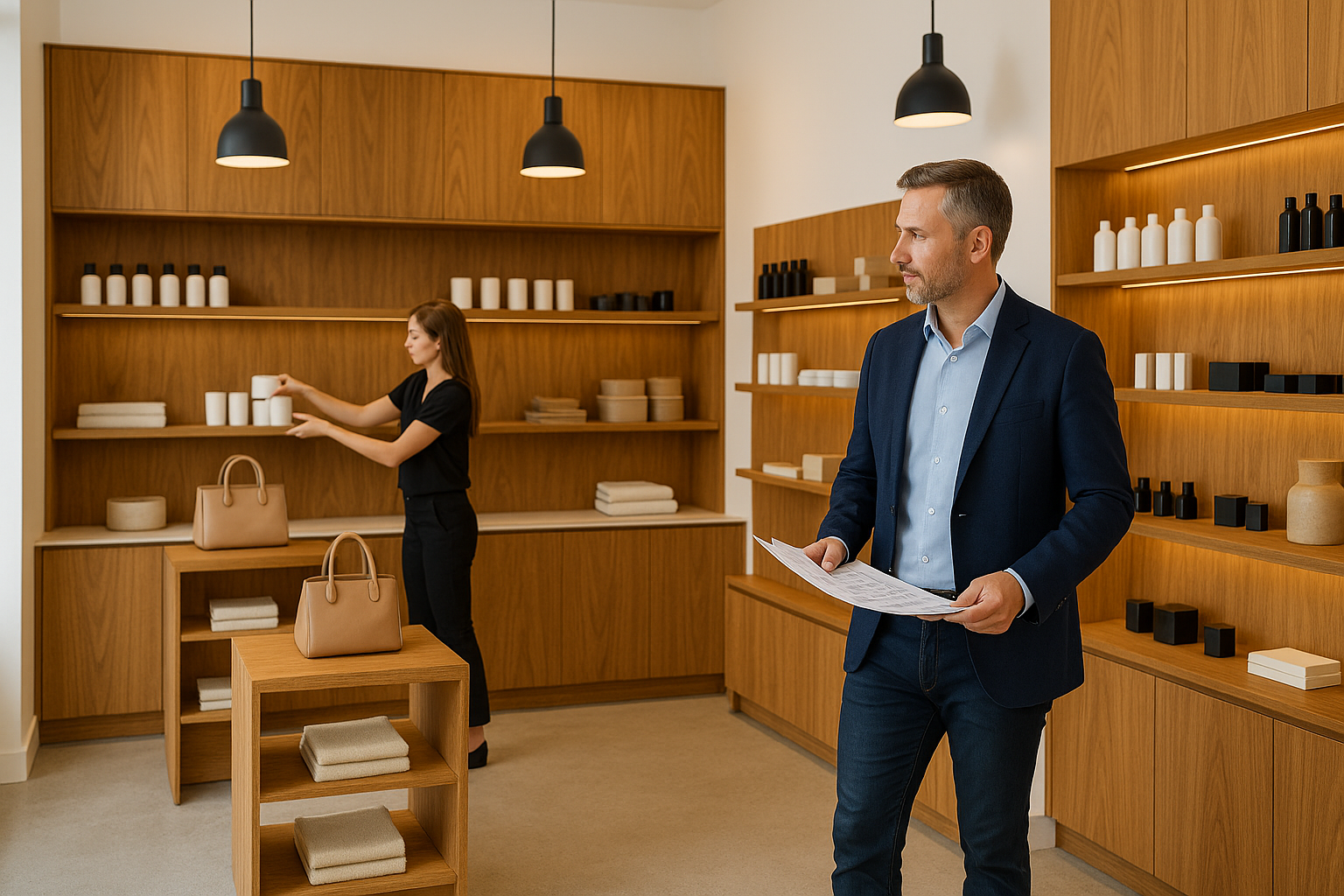What Is Timber Veneer?
Timber veneer is a thin slice of genuine timber, usually between 0.3mm and 2.5mm thick, bonded to a backing board made from MDF, plywood, or particleboard. It captures the visual richness of natural wood grain, while offering greater flexibility and affordability than solid timber.
By using less wood, it also ticks the box for sustainability, a growing priority in commercial interior design.
Why Timber Veneer Works So Well in Retail Fit-Outs
Retail design is about more than just looks; it’s about creating an atmosphere that encourages engagement and drives sales. Timber veneer is a standout choice because it performs beautifully across five key areas:
1. Aesthetic Appeal
Natural timber grain patterns create warmth and sophistication. Whether used in wall panelling, joinery, or shelving, timber veneer instantly elevates a retail space’s visual impact, without the need for solid wood.
2. Durability in High-Traffic Environments
Paired with high-quality substrates and protective finishes, timber veneer stands up to the wear and tear of busy retail settings. It resists scratches and can be refreshed over time through light sanding and refinishing, unlike laminate.
3. Sustainability
Timber veneer maximises the use of each log, significantly reducing timber waste. Many options are FSC® certified or sourced from sustainably managed forests, aligning with the values of brands seeking eco-friendly retail environments.
4. Cost Efficiency
Retailers can achieve a premium timber look for walls, ceilings, or cabinetry at a fraction of the price of solid wood. Veneer offers excellent coverage across large spaces, making it ideal for budget-conscious projects without compromising on design.
5. Design Flexibility
With a huge range of species, tones, grain patterns, and finishes, timber veneer suits almost any brand aesthetic. It can be shaped around curves, cut into panels, or used across fixtures for a consistent and highly customisable result.
Applications of Timber Veneer in Retail Design
Timber veneer can be integrated across all aspects of a store environment, offering both visual appeal and practical benefits.
Feature Walls
Used as a focal point, veneered feature walls provide a rich, textural backdrop that highlights products or frames a specific area of the store. It’s a simple way to infuse luxury into the customer experience.
Shelving and Displays
Timber veneer adds an elegant finish to product shelving and display stands. It transforms basic fixtures into brand-aligned assets, ideal for fashion, beauty, homewares, and lifestyle retailers.
Counters and Service Desks
Checkout areas, consultation counters, and service desks see constant use. Veneer offers a polished, professional finish that holds up over time and can be tailored to suit contemporary, rustic, or minimalist styles.
Ceiling and Overhead Panelling
Using veneer on ceilings or overhead features creates a unified and immersive environment. This is especially effective in luxury retail or wellness spaces where ambience and calm are key.
Strengthening Brand Identity Through Material Choice
Material selection is a powerful branding tool in retail design. Timber veneer, with its authentic grain and natural tones, aligns with a variety of brand messages:
- Luxury retailers use exotic veneers like walnut or ebony to reflect sophistication and exclusivity.
- Eco-conscious brands favour FSC-certified veneers or reclaimed timber to communicate environmental responsibility.
- Local or artisan-led brands opt for native species to reinforce a connection to place and craftsmanship.
Timber veneer provides the design language to reinforce brand identity across every touchpoint of the physical retail space.
Tips for Specifying Veneer in Retail Projects
When integrating timber veneer into your retail fit-out, consider the following:
- Select the right species and grain to match your store’s tone, oak for Scandi minimalism, walnut for high-end luxe, or blackbutt for an Aussie natural feel.
- Choose appropriate finishes, matte and UV-cured options are best for durability and aesthetics.
- Think in systems, use veneer across joinery, wall panels, and signage for a consistent material palette.
- Request samples, check veneer tone and grain in natural light before approving large orders.
- Work with trusted suppliers, reliability in grain matching, delivery, and customisation is critical for commercial timelines.
Final Thoughts: Veneer as the Smart Shopfitting Solution
In modern shopfitting, timber veneer offers a rare mix of style, sustainability, and practicality. It adapts beautifully to different retail environments, whether you’re crafting a boutique, rolling out a national brand concept, or refreshing a flagship location.
Its ability to deliver the visual depth of solid wood, with the flexibility and cost-efficiency needed in commercial projects, makes it a material of choice for forward-thinking retailers and designers alike.
To explore our extensive range of veneer options for shopfitting and retail design, visit Bord Products. Need help finding the right match for your project? Contact us or check out our resources page for inspiration and product support.

Explore Bord Products
Our Melbourne facility produces hundreds of veneer and laminate panels daily, giving us total control over timeframes and quality.

Visit Our Showroom
Get expert advice on material selection for your project and see our entire range of veneers and laminates in person.

Specify Sustainable
We support sustainable forest management in Australia and across the globe. Look out for certified products on our website or speak to us.




